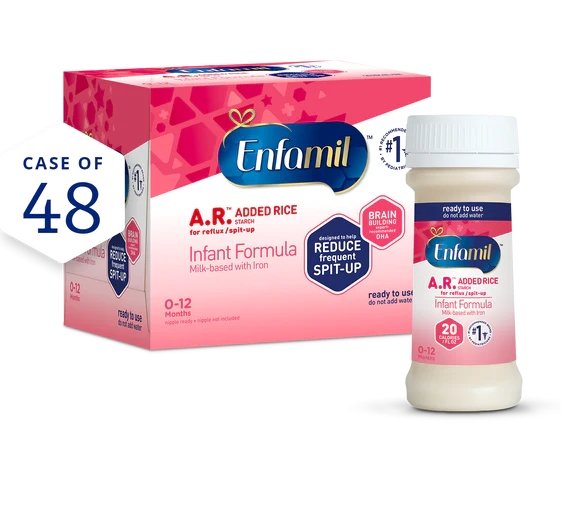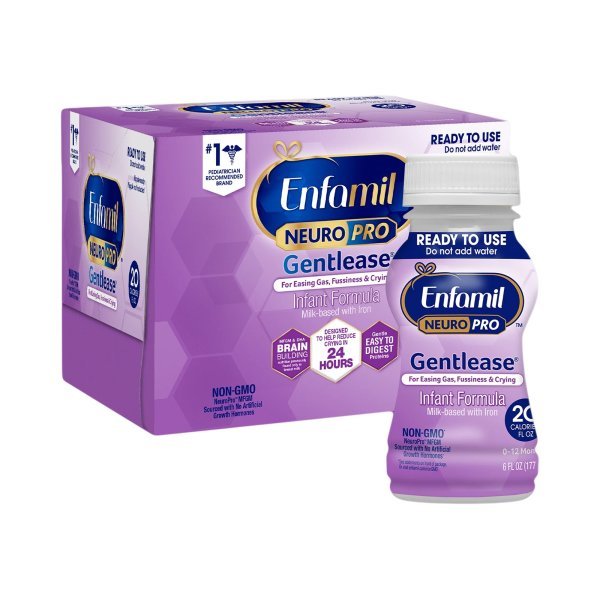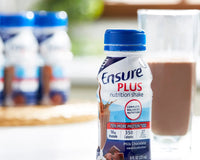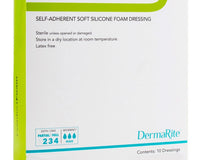Understanding Enfamil A.R. and Its Purpose is crucial for any parent considering mixing Enfamil A.R. with regular formula. Enfamil A.R. (Added Rice) is a thickened milk-based formula designed to reduce frequent spit-up in infants. It contains a rice starch thickener that reacts with the baby's stomach acid to become more solid, thereby staying in the tummy better and reducing spit-up. The formula is nutritionally balanced to provide all essential nutrients that an infant requires for growth and development. However, it's important to note that while Enfamil A.R. is intended for babies with reflux issues, it might not be suitable for all infants, and parents should consult with a healthcare provider before making any changes to their baby's diet.
If you're a caregiver or parent looking to blend Enfamil A.R. with a regular formula, Order online here for convenient shopping and doorstep delivery! Our selection at Cart Health includes a variety of formulas and we're dedicated to assisting you in finding the right product for your infant's needs. Join the Cart Health family and let us help you navigate the complexities of infant nutrition with ease and confidence.
The Basics of Mixing Infant Formulas Safely

The Basics of Mixing Infant Formulas Safely involves understanding that not all formulas are created equal, and each has been developed to meet specific nutritional needs. When mixing infant formulas, it's essential to maintain the precise nutritional balance designed by the manufacturer. To do this, caregivers must follow the preparation instructions carefully. It begins with ensuring all utensils are sterilized and hands are thoroughly washed to prevent contamination. Next, measure the water and formula accurately using the scoops provided or according to the instructions on each formula's packaging. It's critical to adhere to the recommended water-to-formula ratio to avoid diluting the nutrients or making the feed too concentrated, which could harm the baby's health.
Moreover, it's advisable to prepare each formula separately before combining them to ensure each is mixed correctly. Once prepared, the formulas can be blended gently to avoid creating excessive air bubbles, which could lead to gas and discomfort for the infant. Remember, consistent and precise preparation is key when mixing Enfamil A.R. with regular formula or any other infant formulas. This meticulous approach helps to ensure the baby receives the intended nutrition and benefits from both types of formula.
Step-by-Step Guide to Combining Enfamil AR With Regular Formula

When combining Enfamil A.R. with regular formula, following a step-by-step guide can help ensure the process is done safely and effectively. First, it is crucial to consult with a healthcare professional to confirm that mixing these formulas is suitable for your baby’s dietary needs. Upon their approval, start by reading the labels on both formulas to understand the specific mixing instructions provided by the manufacturers.
Next, begin by sterilizing bottles, nipples, and any mixing utensils to eliminate potential bacteria. Pour the required amount of water into the baby bottle, heated to the manufacturer's recommended temperature. Then, using the scoop provided with the Enfamil A.R., add the exact amount of formula powder into the water. Seal the bottle and shake it until the formula powder is fully dissolved. Follow a similar process with the regular formula in a separate bottle.
Once both formulas are prepared, you can combine them by slowly pouring one into the bottle containing the other, being careful to maintain the appropriate ratios. Gently swirl the bottle to mix the formulas without creating too much froth or air bubbles. This meticulous approach to mixing Enfamil A.R. with regular formula ensures that your baby receives a consistent blend of the specialized nutrients and benefits each product has to offer.
Potential Benefits and Considerations for Mixed Feeding

Mixed feeding, particularly when it involves mixing Enfamil A.R. with regular formula, can offer several benefits but also requires careful consideration. The primary benefit of this practice is that it allows parents to address specific health concerns such as reflux, which Enfamil A.R. is designed to alleviate, while still providing the general nutrition found in standard infant formulas.
Enfamil A.R. contains rice starch that thickens in the stomach, potentially reducing spit-up incidents, which is a common issue for infants with reflux. By mixing it with regular formula, parents can tailor the thickness of the feed to their baby’s tolerance and needs, potentially improving their comfort and digestion.
However, there are important considerations to keep in mind. The precise mixing ratio must be followed to avoid over-concentration or dilution, which could lead to nutritional imbalances or reduced effectiveness of the reflux-specific benefits. Additionally, mixed feeding should be monitored to observe any changes in the baby’s digestion or acceptance of the formula.
It’s crucial to note that while mixed feeding can be beneficial, it is not suitable for all infants. Each child’s nutritional requirements and health status are unique, and what works for one may not work for another. For this reason, parents should always discuss mixed feeding with a pediatrician before making changes to their baby's diet.
Expert Tips for Storage and Handling of Mixed Formulas

Proper storage and handling of mixed formulas are crucial to ensure the safety and nutritional integrity of the baby's food. Here are some expert tips for parents who are mixing Enfamil A.R. with regular formula to ensure optimal freshness and prevent contamination:
- Always wash your hands thoroughly with soap and water before preparing formula to minimize the risk of bacterial contamination.
- Use clean and sterilized bottles and mixing utensils. Sterilization is especially important for newborns and infants with compromised immune systems.
- After mixing the formulas, any unused portion should be stored in the refrigerator immediately and used within 24 hours to prevent bacterial growth.
- Label the mixed formula with the date and time it was prepared to keep track of its freshness.
- Avoid leaving mixed formula at room temperature for more than one hour to reduce the risk of spoilage.
- When warming up refrigerated mixed formula, place the bottle in a container of warm water or use a bottle warmer. Do not microwave the formula as it can create hot spots and affect the formula's consistency.
- If your baby does not finish a bottle of mixed formula, it's best to discard the remainder rather than store it for later use to avoid the risk of bacterial growth.
Sticking to these guidelines can help parents maintain the quality of the mixed formula, providing their infants with safe and nutritious feedings. Remember, always consult with your healthcare provider regarding any questions or concerns about preparing and storing your baby's formula.
Addressing Common Concerns When Mixing Formulas
Parents may have several concerns when considering mixing Enfamil A.R. with regular formula. However, by addressing these concerns with accurate information and careful preparation, parents can feel confident in providing their infants with the nutrition they need. The following points address some common worries:
- Consistency: Enfamil A.R. is designed to thicken in the stomach to help reduce spit-up. When mixed with regular formula, ensure the final consistency is appropriate for your baby's feeding needs.
- Nutritional Balance: Combining different formulas may alter the nutritional profile. It's essential to consult with a pediatrician to ensure the mixed formula meets the dietary requirements of your child.
- Allergic Reactions: If your baby has shown sensitivities or allergies, be cautious about introducing a new formula. Monitor for any adverse reactions and consult with your healthcare provider if you have concerns.
- Taste Preference: Babies may prefer one formula over another. Mixing formulas can change the taste, so it's important to observe your baby's willingness to feed.
It's always important to follow the guidance of a healthcare professional when making changes to your infant's diet. If you're ready to try mixing formulas, or if you need any other specialized health products, Order online here for convenient shopping and doorstep delivery! At Cart Health, we're committed to providing you with the support and solutions you need for your unique health situations.











